|
You’re writing in third-person and your viewpoint character has become unconscious. However, you want the reader to understand how their discovery and recovery come about, and without head-hopping. Here are 5 ideas for how to tackle it.
What’s covered in this post
Start at the top if you’re new to viewpoint, or jump straight to the solutions if you’ve already nailed it but are wondering what to do about your oblivious point-of-view character.
> Protagonists versus viewpoint characters > Why an unconscious character can’t be a POV character > Head-hopping, narration style and number of POV characters > The setup – a fictive piece of fiction! > Solution 1: Create a new section or chapter with a new POV character > Solution 2: Create a new section or chapter and switch narration style > Solution 3: Unveil through dialogue > Solution 4: Unveil through data > Solution 5: Use emotional reflection Protagonists versus viewpoint characters
The protagonist is the person whose experiences drive the story. The novel revolves around them. Readers are usually more connected to them and their outcome within the story than any other character.
The POV character is the person whose internal experiences drive a scene or chapter.
While your protagonist might often be the POV character, one role doesn’t always equal the other. A POV character can also be an antagonist, a major character, or a bystander who makes but one appearance. Your protagonist, however, is always your protagonist, whether they’re in a scene, doing something else somewhere else, or lying in a coma on the beach. Why an unconscious character can’t be a POV character
Perhaps your POV character has had an accident, become ill, been knocked out, or drugged. Perhaps they’ve drunk or drugged themselves into unconsciousness.
As long as they’re unconscious, they don’t know what’s happening. Which means the reader doesn’t either. Their oblivion is ours. And at that point they’re no longer a viewpoint character. They can’t be; they’re busy being unconscious. However, just because they’re out for the count doesn’t mean the story is. Action is still taking place in the form of physical movement, dialogue, and the passing of time. If authors need to tell the reader what happens to the unconscious character during their period of absence, it needs to be done in a way that makes sense. If a character regains awareness, becomes the POV character and reports what happened to them during time out, they need a way to access that information. Otherwise, someone else will report that information, and a new POV character comes into play. Head-hopping, narration style and number of POV characters
What is head-hopping?
When readers are forced to jump from one character’s thoughts and experiences to another’s in a single scene, head-hopping is in play. Head-hopping is convenient because it lets readers know what everyone in a scene is thinking and feeling all at once. That convenience is usually a problem in commercial fiction because it rips out the suspense. Rather than readers getting in the heads of everyone, they engage with and invest in no one because they are never in one place long enough to do so. What is third-person limited POV? Third-person limits readers to a single character’s experience – what they see, hear, feel and think. Readers get to sit in their skin; it’s as if we’re them. In that sense, it’s not unlike first-person narration, another in-skin POV. The difference is the pronouns – he/she/they/it for third person; I/we for first person. The difference lies in the narrative distance – how close the reader feels to the character. With third person, the distance is wider because those pronouns are a constant reminder that the character is someone else. With first person, the ‘I’ personalizes the experience more deeply because we’re reading the same language we’d use if we were talking about ourselves. Third person is a narration style that most writers find easy to master at the beginning of their journey, and is popular with writers and readers of commercial fiction. How many viewpoint characters can a novel have? A novel can have multiple viewpoint characters sharing their experiences through various narration styles such as first person (I) and third-person limited (she, he, they). However, it’s conventional in commercial fiction for each POV character to tell their story in distinct chapters or sections. Lumping multiple viewpoints into a single scene is often an indication of head-hopping. The setup – a fictive piece of fiction!
Let’s set up a scene. Our current viewpoint character is Alicia, a private investigator. She’s also the protagonist.
Alicia’s received a tip-off from an old contact that her targets are using a derelict office building on the edge of an industrial estate for nefarious purposes. Early in the evening, she decides to snoop around. She scopes the place out and enters once she’s confident the coast is clear. Part way through her search, she feels a blow to the back of her head. Next thing she knows, the floor’s coming towards her face. That’s where the chapter ends. Because I’m the writer, I know the following:
How much of this information I can convey without dropping viewpoint will depend on how many POV characters I have in the novel, which narration styles I feel confident using, and when I decide to reveal this information so that I maximize reader engagement. Solution 1: Create a new section or chapter with a new POV character
Creating a new section or chapter with a new viewpoint character is perhaps the easiest option if the novel has been structured such that it regularly switches between several characters’ experiences, each narrated in a first or third-person-limited style.
Let’s say it’s the first time Patty has entered the story but I plan to show the world through her eyes in future chapters and will deepen the reader’s engagement with her character in the process.
And so, for now, we can switch from Alicia’s POV after she’s hit the floor and give Patty a section or chapter that introduces her to the reader and shows us the world through her eyes. Here’s how that scene might play out.
Gerry swings into the kitchen as Patty puts a leg of beef into the crockpot.
‘Dinner will be ready bang on 8 pm, darling,’ she says. He grunts. Ungrateful pig. She chops vegetables and thinks about how damn weird today was. The call on the way back from the supermarket from you-know-fucking-who. A possible security breach at the Wickers building. Like she didn’t already have enough on her plate. Her handling security? What did they expect? This is Norwich, not New York. Thank God for that leg of beef. How she climbed the stairs and found that woman rifling through a filing cabinet containing all their Very Sensitive Information. How the leg of beef – frozen solid – made a thwack as it connected with the back of the woman’s head, and the way she just flumped down. No resistance, no fight. All very not Jack Reacher. How she checked the woman – still breathing. Good – then grabbed the paperwork and got the fuck out. How she’s stepped over a line. But most of all how this time next year she’ll have dished up a decree nisi rather than a roast for her arse of a husband and his prickless cronies. So now the reader knows what happened to Alicia but in a way that gives another viewpoint character the floor and opens the door to the reader’s journey with her. There are questions too, because now we want to know more about Patty.
A word of caution Those questions will need to be answered eventually. If they’re not – if out of the blue, we’ve been granted intimacy with Patty for the purpose of explaining what happened to Alicia only never to revisit her – the reader will be left feeling that there’s unfinished business, and that they’ve been party to a literary tool of convenience. That’s a contrivance and a manipulation, and will damage your story. Solution 2: Create a new section or chapter and switch narration style
To avoid the convenience problem, you could adapt Solution 1 by pulling back and opting for an alternative narration style.
A third-person-objective narration could work. Here, the prose is flatter, more told. The reader focuses on what can be seen and heard, rather than being immersed in emotional context. This style widens the narrative distance but allows you to tell the facts. And that might well suit the mood of your book now and then.
We learned a lot about Patty in Solution 1. But what if I decide that Patty is a character I don’t want to develop? In that case, the reader doesn’t need to know anything about her.
It might be discovered later that the perpetrator was called Patty, and that she’d got in with a bad crowd, or was a frozen-beef-joint-wielding walloper for hire, but that’s not the story. Patty will not make the grade as a POV character in the novel. And so instead, I could place this new section or chapter after Alicia’s scoped out the building and started snooping, but remove her experiencing the blow to the head.
The call is brief. There’s a possible security breach at the Wickers building. The driver pulls up in front, takes a plastic bag from the back seat and enters the building. She listens. Hears the squeal of a rusty filing-cabinet drawer on the next floor up. Mounts the stairs, pulls a leg of beef from the bag and stuffs the plastic in her pocket. She enters a room.
A woman is by the filing cabinet, rifling through the contents, her back facing the door. The driver swings and the joint cracks against the back of the woman’s head. She flops forward. There’s a sickening thud as her head recoils on the concrete. The driver checks the leg of beef. In forty-five minutes, it’ll be in the crockpot. In four hours, it’ll be on the plate. It’s exposition without emotion, and told objectively. Now the reader knows what happened to Alicia, but it’s been narrated in a way that’s cold, clinical and anonymous. And that might very well serve your novel better than an emotional, limited narration that needs developing. Solution 3: Unveil through dialogue
If your novel has only one viewpoint character, this solution will allow you to unveil what happened, and when, through a conversation.
Your POV character needs to have recovered sufficiently and be able to access the people who have that information and engage in dialogue with them or eavesdrop on a conversation they’re having. They could be the police or security services, medical staff, an antagonist, the saviour – anyone who knows and can fill in the blanks. It means the unveiling comes after the period of unconsciousness, which makes it an emotionally rich experience for the reader because we’re discovering what happened to the POV character at the same time as they are. We get to live their life with them in the moment.
Let’s imagine Alicia has recently regained consciousness again. She’s the POV character; we experience the world through her lens.
I want her to report her discovery of some of what happened to her and where she is. She’s ignorant of all the facts. Here’s how that might appear on the page.
She turned her head to the side. Bad idea. It hurt like a bitch and made her want to throw up. She took a few breaths, lifted an arm: ID bracelet and an IV taped to her hand. To the right: railings and a handset with a call button. Ahead: a pale-blue curtain.
Hospital. A nurse poked his head out around the curtain, then disappeared. A man pushed through, smiled and introduced himself. Detective Paul Brown. Big, warm eyes and a neat beard that mostly covered a purple birth mark. ‘How long have I been here?’ she said. ‘Since last night. Bunch of kids found you in the old Wickers building on the industrial estate at 8 pm. You were out cold.’ He smirked. ‘You were lucky. Said they went there just to hang out and listen to music but one of ’em stunk of weed. We’ll let it go … they called you in and stuck around. So what’s going on?’ ‘I don’t know. I was … I was looking in the filing cabinet and there was this pain and … that’s it. I woke up here with my head feeling like it’s going to explode.‘ ‘Not surprised after the clobbering you took.’ ‘What’s—' Brown waved a hand. ‘It’s okay. A concussion, but the docs say you’re doing fine. So come on, I’ve told you what I know. Your turn.’ Alicia decided to trust him. Now she knows what the police officer knows, and the reader knows too. And unveiling it like this avoids a mundane in-the-now narrative about a group of kids whom we’ll never meet again. Solution 4: Unveil through data
Similar to Solution 3, the unveiling of what happened and when during the character’s unconsciousness is revealed later, but this time through files, documents, records, a diary, reports, messages or some other physical repository.
Again, they’ll need to be sufficiently recovered and have a mechanism for accessing this data. As with the previous solution, the reader is drawn deeper into the POV character’s experience because we’re with them every step of the way on that journey of discovery.
In this scenario, I want to reveal who knocked Alicia out and how – not just to the reader (as with Solutions 1 and 2) but to Alicia herself. Perhaps this happens much later in the book, once she’s much further on in her investigation.
Alicia flicked through the diary, skimming pages full of domestic fury. One word jumped out. WICKERS.
8 January I stepped over a line today. Whacked someone. Just like that. Not whacked as in killed, mind you. I wouldn’t go that far. Well, I don’t think so! I was on my way back from the supermarket when the call came. You-know-fucking-who. Shocked me, it did – possible security breach. Like I don’t already have enough on my plate with HIM. I don’t get it. Of all of us, I’m hardly the best person to be handling security. What did they think I was going to do? This is Norwich, not New York. Thank God I’d picked up a leg of beef. Anyway, I hear someone messing around on the upper floor so up I go, and there she is, this woman, rifling through a filing cabinet containing all our Very Sensitive Information. I didn’t think twice, that’s the thing. Just swung the meat at her. Frozen solid it was. It made a sort of thwack as it landed on the back of her head. And the way she just flumped down … no resistance, no fight. All very not Jack Reacher. I checked her (I’m not a monster), and she was still breathing so that was good. Then I grabbed the paperwork and got the fuck out. I tell you, next year I’ll be dishing up a decree nisi not a roast for that arse of a husband and his prickles cronies. Still, I should be grateful. No evidence. They ate every morsel. This solution allows us to access Patty’s voice – she speaks through the pages of her diary – but it’s our protagonist whose eyes we read through and whose head we’re in. Solution 5: Use emotional reflection
A fifth option is to use emotional reflection. This contemplation approach might be more suitable if your character has time to reflect.
Perhaps they’re still in hospital or bed-bound or imprisoned and are thinking about what they’ve learned. You might find it’s a good solution if you want to slow the pace and give the story some breathing room – space for a little recent backstory.
I still want the reader to discover how Alicia ended up in the hospital, but rather than have them experience the reveal with her, they’re late to the party; she’s had a chance to reflect on it.
She raised her head. Okaaay, not too bad. A couple of hours ago, it had hurt like a bitch just to open her eyes. She took a few breaths, lifted an arm and inspected the ID bracelet and IV taped to her hand. Pressed the call button on the railings.
A nurse poked her head around the pale-blue curtain, asked Alicia if she wanted anything. She was parched, she said. The nurse poured her a glass of water, patted her arm, called her sweetheart. She had big, warm eyes, like the detective who’d come earlier. He’d smiled when he introduced himself, made her feel like she could trust him as he’d scratched a neat beard that mostly covered a purple birth mark. He’d told her what he knew. That her head had taken a clobbering. A concussion, but she’d be okay. That she’d been in the hospital most of the night. Bunch of kids had found her in the old Wickers building around 8 pm. She’d been out cold. That she was lucky; the kids, all of them stinking of weed, could’ve legged it but they’d stuck around, called an ambulance, made sure she was safe. It made her teary. People could surprise you sometimes. We’ve still avoided in-the-now description about the movements of a group of kids we’ll never meet again. And our POV character has reported what happened between her hitting the floor and waking. However, this time it’s revealed in a more introspective manner – background detail that’s framed within a deeper understanding of Alicia’s character, for example, sharing what she notices and the emotionality that her judgement is founded on. Summing up
Just because your POV character is out of it doesn’t mean the story of what happened during that time can’t be unveiled while holding point of view.
Experiment with narration style and different time frames for the unveiling, and separate characters’ experiences by giving their scenes distinct sections or chapters. And don't forget that your protagonist is always your protagonist, even if they're not the viewpoint character because they're unconscious. Related reading
Louise Harnby is a line editor, copyeditor and proofreader who specializes in working with crime, mystery, suspense and thriller writers.
She is an Advanced Professional Member of the Chartered Institute of Editing and Proofreading (CIEP), a member of ACES, a Partner Member of The Alliance of Independent Authors (ALLi), and co-hosts The Editing Podcast. FIND OUT MORE > Get in touch: Louise Harnby | Fiction Editor & Proofreader > Connect: Twitter at @LouiseHarnby, Facebook and LinkedIn > Learn: Books and courses > Discover: Resources for authors and editors
0 Comments
Every novel has a viewpoint character and a protagonist. However, they’re not necessarily the same person, at least not all of the time. Here’s a quick guide that explains the differences.
Stories usually have multiple characters, and often have more than one major character. However, just because a character has a major role does not make them a protagonist.
Stories can be narrated by different characters in a book. Whoever’s head the reader is in is called the viewpoint character. However, just because a character is narrating a story does not make them a protagonist or a major character. Protagonists
We can think of protagonists as having a MACRO role.
The protagonist is the person whose experiences drive the story. The novel revolves around them. Readers are usually more connected to them than any other character.
Viewpoint characters
We can think of viewpoint characters as having a MICRO role.
The POV character is the person whose internal experiences drive a scene or chapter.
Is the protagonist always the viewpoint character?
No, the viewpoint character and the protagonist can be different characters. While your protagonist might often be the POV character, one doesn’t always equal the other.
A POV character can be the protagonist, the antagonist, a major secondary character, a minor character, or a bystander who makes but one appearance. As long as it’s their head we’re in, and they who are reporting the scene through their experience of it, they’re the viewpoint character. Your protagonist, however, is always your protagonist, whether they’re in a scene, doing something else somewhere else, or lying unconscious in some back alley. Applying the terminology: An example
I’m using Linwood Barclay’s Parting Shot to illustrate the distinction between viewpoint character, protagonist, main character and secondary character.
Here's a breakdown that shows you how Barclay weaves multiple viewpoint characters into the first 17 chapters of the book.
It goes on until the final chapter wraps up with Cal’s first-person viewpoint. We are in his head as he recalls critical information that enables him to put it all together and verbally reveal whodunnit to his audience.
There are 65 chapters in total, each with distinct viewpoint characters narrating the scene. As each viewpoint character takes a turn, they show us what’s happening through their actions, emotions, thoughts and senses. The characters – major and secondary – play a variety of key roles.
But there is only one protagonist. It is Cal’s job throughout to discover who did what, and why. Even when he’s not in the scene, and therefore not the viewpoint character, he’s driving the direction of the story, the goal of which is to understand how a young girl came to die. Summing up
The key is not to confuse the terms ‘major’, ‘protagonist’ and ‘viewpoint’. Those attributions don’t mean the same thing. To summarize:
A novel can have multiple viewpoint characters, each taking a turn to narrate part of the story. Their viewpoints will enrich the tale but their overall goals don’t underpin it. The viewpoint character could be the protagonist, the antagonist, a major character, or a secondary character. As long as they’re narrating, they’re the viewpoint character. A novel will usually have only one protagonist. They might be the viewpoint character throughout, in which case we only ever see the world through their lens. Or they might be temporarily absent and allow others to tell a part of the tale and share their emotions and experiences. A novel will usually have other major and secondary characters whose experiences are central to the story. They might get a chance to narrate the story and therefore be the viewpoint character, or their experiences might be narrated by someone else. Further reading
Louise Harnby is a line editor, copyeditor and proofreader who specializes in working with crime, mystery, suspense and thriller writers.
She is an Advanced Professional Member of the Chartered Institute of Editing and Proofreading (CIEP), a member of ACES, a Partner Member of The Alliance of Independent Authors (ALLi), and co-hosts The Editing Podcast. FIND OUT MORE > Get in touch: Louise Harnby | Fiction Editor & Proofreader > Connect: Twitter at @LouiseHarnby, Facebook and LinkedIn > Learn: Books and courses > Discover: Resources for authors and editors
If you edit or proofread directly in Microsoft Word, PerfectIt is must-have software. This post highlights my favourite features, and explains why I think it's the best consistency-checking software on the planet.
What is PerfectIt?
PerfectIt is a sophisticated consistency-checker and style-enforcer. By customizing its built-in style sheets, creating your own, or uploading some of the free ones others have shared, you can define your preferences and let PerfectIt locate variations and possible errors.
PerfectIt comes in two versions:
In this article, I'll highlight the features I find most useful when editing directly in Microsoft Word for independent authors. Disclaimer: I have a PerfectIt licence and am a long-time user of the software. However, the developer has not asked me to write this review, nor have I been remunerated in any way for doing so. The views expressed herein are mine and based solely on my experience of using PerfectIt on a regular basis. Why I wouldn't be without a PerfectIt licence
Why the software works best when the user takes control
To get the best out of PerfectIt, you must tell it what you want it to do.
That means launching one of the style sheets and taking time to consider the various options (and there are a lot). During my early days of using the software, I found it missed inconsistencies and flagged up false positives. It turned out is wasn't PerfectIt that was functioning inadequately. It was me. I hadn't told it what was relevant to me, so it did the best it could with the information it had. I spent time refining my style sheets to meet my needs, and was rewarded for my effort. If you don't make the time to customize PerfectIt, you'll get good result. If you do, you'll get great results. A summary of PerfectIt's core functions
Here's an overview of what the software can do for you when you're writing and editing in Word.
My favourite features and how they help me
Here's what I love most about PerfectIt. These are the checks I carry out routinely and why I think it's must-have software for the editorial freelancing pro.
1. Wildcard searches
2. Missing brackets and quotation marks 3. Oxford/serial comma 4. Italic text 5. Dashes and non-breaking spaces 6. Heading format 7. Custom style guides 1. Wildcard searches
PerfectIt allows you to harness the power of wildcard searches using exactly the same terms you’d use in Word.
I love this feature because it means I can work more efficiently – I don’t have to run a set of find/replace searches in Word and then go and do a bunch of other stuff in PerfectIt. I can consolidate all my wildcard searches in one place, which saves me time. Plus, Word can get a little grumpy with wildcards if we're editing with Track Changes on, which is essential for the kind of work I do. 2. Missing brackets and quotation marks
This is a gem for those work on academic projects with lots of brackets (e.g. author/date citations or quoted matter) and those of us who proofread and edit fiction (e.g. dialogue).
3. Oxford/serial comma
The debate about whether the Oxford comma is useful or unnecessary rumbles on in the world of words.
No matter – editors and proofreaders often find themselves instructed by their client to use it or bin it (except where enforcing the preference would lead to a lack of clarity). PerfectIt allows you to set a preference either way. 4. Italic text
If your client has insisted that a particular word is italicized (or not), you’ll love this function. PerfectIt already has a built-in list of words that can be styled, but you can add your own.
5. Dashes and non-breaking spaces
If you work on documents riddled with hyphens that should be spaced en dashes or closed-up em dashes, or you want to ensure that all those space-separated numbers and measurements aren't going to fall over the cliff at formatting stage, you’ll adore this function.
We can fix this problem with Word’s find/replace tool, but being able to consolidate the search within the PerfectIt platform is another time-saver. The fewer programs we have use to get high-quality consistency within the framework of a client’s brief, the more time we save and the better our hourly rate. 6. Heading format
PerfectIt enables us to harness the power of Word’s styles palette. You can set your preferences for several different heading levels, e.g. sentence case, initial caps on significant words, upper case, or all initial capitals.
7. Custom style sheets
You can build your own style sheets or grab one of the fantastic freebies that have been created and generously shared by other editors. My three current favourites are:
Join the PerfectIt Users Facebook group and click on the Files tab to access the style sheets. How often to run PerfectIt
How often should you run PerfectIt it? It's up to you. I like to run it three times: at the start of a project, in the middle and at the end.
Other benefits
There are three more things I love about PerfectIt's functionality.
That's the thing about PerfectIt and me – we're partners. It does what software's good at so I can do what humans are good at. Fancy trying it? Visit the Intelligent Editing website. If you've bought one of my courses or books direct from this website, log in and grab your special discount code. Related resources
> Author resources library (includes links to free webinars and writing tools)
> Editor resources library (see in particular the Editing Tools section)
Louise Harnby is a line editor, copyeditor and proofreader who specializes in working with crime, mystery, suspense and thriller writers.
She is an Advanced Professional Member of the Chartered Institute of Editing and Proofreading (CIEP), a member of ACES, a Partner Member of The Alliance of Independent Authors (ALLi), and co-hosts The Editing Podcast. FIND OUT MORE > Get in touch: Louise Harnby | Fiction Editor & Proofreader > Connect: Twitter at @LouiseHarnby, Facebook and LinkedIn > Learn: Books and courses > Discover: Resources for authors and editors
Give your novel a sentence-level workout. Here are 6 common problems, and the solutions that will improve the flow of your fiction and make the prose pop.
Review your novel for 6 common problems. None involve major rewriting, just relatively gentle recasts that will improve your prose significantly, and make your reader's experience more immersive. 1. Assess invasive adverbs 2. Remove redundant filter words 3. Take the spotlight off speech tags 4. Pick up dropped viewpoint 5. Trim anatomy-based action 6. Turn intention into action 1. Assess invasive adverbs
Not all adverbs and adverbial phrases are bad. Suddenly, slightly, slowly, nervously, calmly, quietly can be effective if used now and then.
However, overuse is often a symptom of an author telling us what’s already been shown, which means the adverbs are repetitive and cluttering. In the two examples that follow, they can be ditched because 'fidgeted' shows the nervousness, and the apology in the dialogue shows the regret.
EXAMPLES
Even when adverbs are telling us something new, consider elegant recasts that use stronger verbs but still keep readers in the moment.
EXAMPLES
2. Remove redundant filter words
When readers are told of doing being done by a viewpoint character, filtering is in play. Realized, knew that, wondered, thought, saw, and decided are just a few examples.
The reader is already experiencing the story through a viewpoint character. For that reason, we often don’t need to be told that they realize, see, think or feel anything. We’re already in their heads. It’s telling what’s already been shown.
EXAMPLES
Filtering pulls us out of the deep, limited viewpoint. Worse, it’s repetitive and obvious. Jane has already looked at the screen so we know her eyes are doing the work; telling us that she saw as a result of her glancing is redundant. In the example where Matthew’s the narrative viewpoint character, we needn’t be told he feels the thumping in his temples, since if he weren’t feeling it he couldn’t report it. Nor do we need to know he’s thinking about that third glass because we’re already in his head. 3. Take the spotlight off speech tags
'Said' is almost invisible when it comes to dialogue tags. A smattering of 'asked', 'replied', 'whispered', and 'yelled' can also work well.
Sometimes tags aren’t even necessary because it’s obvious who’s speaking. Other times, we can replace a tag with an action beat than conveys movement and emotion. Readers should be focused on the dialogue. If a showy tag is necessary to convey a character’s voice or mood, the speech might need a rethink. In the examples below, the speech tags do the following:
EXAMPLES
ALTERNATIVES
4. Pick up dropped viewpoint
Narrative viewpoint is a big topic so I’ve focused on two common sentence-level slips:
The viewpoint character reports what they can’t know Reporting what can’t be known often comes with filter phrases such as 'could tell (that)' and 'knew (that)'. In this example, John is the viewpoint character. We experience the story though his senses.
EXAMPLE
There, behind the desk, sat Reja, the girl he’d dated two decades earlier. ‘Sergeant John Davis,’ he said, and held out his hand. He could tell she didn’t remember him. Actually he can’t tell any such thing. It might seem that way, but for all John knows, she could be hiding it because she has another agenda. Telling us that’s not the case removes any underlying suspense – stops us asking the question. This might seem like a small slip but it’s the kind of thing that turns over all the power of a limited/deep viewpoint to an all-knowing narrator and rips apart the tight psychic distance between reader and the viewpoint character. Here are two recasts that avoid the viewpoint drop:
ALTERNATIVES
There, behind the desk, sat Reja, the girl he’d dated two decades earlier. ‘Sergeant John Davis,’ he said, and held out his hand. She showed no sign of recognizing him. There, behind the desk, sat Reja, the girl he’d dated two decades earlier. ‘Sergeant John Davis,’ he said, and held out his hand. There was no recognition on her face. Non-viewpoint characters’ internal experiences Here we’re talking about head-hopping. It’s when readers are able to access emotions, mood and thoughts of a non-viewpoint character. In the example that follows, Reja is the viewpoint character.
EXAMPLE
Bloody fool. Who did he think he was? Reja jammed her hat down over her ears. No way was she leaving with him. John could have kicked himself. He shouldn’t have come on that strong. Not after what she’d been through. The solution is to recast the text so that these emotions, mood and thoughts can be inferred or accessed externally – for example, through movement or speech – by the viewpoint character only. Here’s a possible recast.
ALTERNATIVE
Bloody fool. Who did he think he was? Reja jammed her hat down over her ears. No way was she leaving with him. John palmed his forehead and spluttered an apology. ‘I shouldn’t have asked. Not after … well, you know.’ 5. Trim anatomy-based action
Prose is more immersive when readers aren’t told what they can assume is being done by body parts that are associated with particular actions – holding with hands, gazing with eyes, standing to their feet, kneeling on their knees, nodding heads, and shrugging shoulders.
In the example below, we might remove the obvious body parts and focus more specifically on the part of John's legs doing the kicking and the impact of his action. As for the gun-toter, the hands have been ditched.
EXAMPLE
John kicked out with his legs. The woman stumbled, righted herself and came at him again, pistol raised in her hands. ALTERNATIVE John kicked out, slamming his heel into her kneecap. The woman stumbled, righted herself and came at him again, pistol raised. 6. Turn intention into action
Sometimes the reader needs to know what a character wants to achieve from a particular action. This is about the why of an action.
EXAMPLE
Jane squeezed the detergent into the porridge. Just a couple of squirts to give Alice a taste of her own medicine. However, when an author means to show the how of an action but tells of intention to act, there’s a problem. The red flag to watch out for is 'to'. We can check whether the focus is on point by asking a question: What action do we want to show the reader (via Jane)? If we want to show the reader that Jane can lift her wrist – because that’s what the first example below is showing us – we can leave as is. However, that's rather dull; it's more likely that we want to show that Jane is checking the time, and so a leaner alternative is more effective.
EXAMPLE
Jane lifted her wrist to look at her watch. Bang on two. ALTERNATIVE Jane checked her wristwatch. Bang on two. Summing up
None of these 6 tweaks are rules! Think of them instead as suggestions to consider, ideas that can help you smooth and tighten up your prose.
And don't worry about them at first-draft stage. Use that space to get the words on the page. Put your sentence-level editing craft in play with a later draft, and once your story's structure, plot and characterization have been fully developed. Further reading
Want to develop your line-editing skills? Check out these resources:
Louise Harnby is a line editor, copyeditor and proofreader who specializes in working with crime, mystery, suspense and thriller writers.
She is an Advanced Professional Member of the Chartered Institute of Editing and Proofreading (CIEP), a member of ACES, a Partner Member of The Alliance of Independent Authors (ALLi), and co-hosts The Editing Podcast. FIND OUT MORE > Get in touch: Louise Harnby | Fiction Editor & Proofreader > Connect: Twitter at @LouiseHarnby, Facebook and LinkedIn > Learn: Books and courses > Discover: Resources for authors and editors |
BLOG ALERTSIf you'd like me to email you when a new blog post is available, sign up for blog alerts!
TESTIMONIALSDare Rogers'Louise uses her expertise to hone a story until it's razor sharp, while still allowing the author’s voice to remain dominant.'Jeff Carson'I wholeheartedly recommend her services ... Just don’t hire her when I need her.'J B Turner'Sincere thanks for a beautiful and elegant piece of work. First class.'Ayshe Gemedzhy'What makes her stand out and shine is her ability to immerse herself in your story.'Salt Publishing'A million thanks – your mark-up is perfect, as always.'CATEGORIES
All
ARCHIVES
July 2024
|
|
|
|


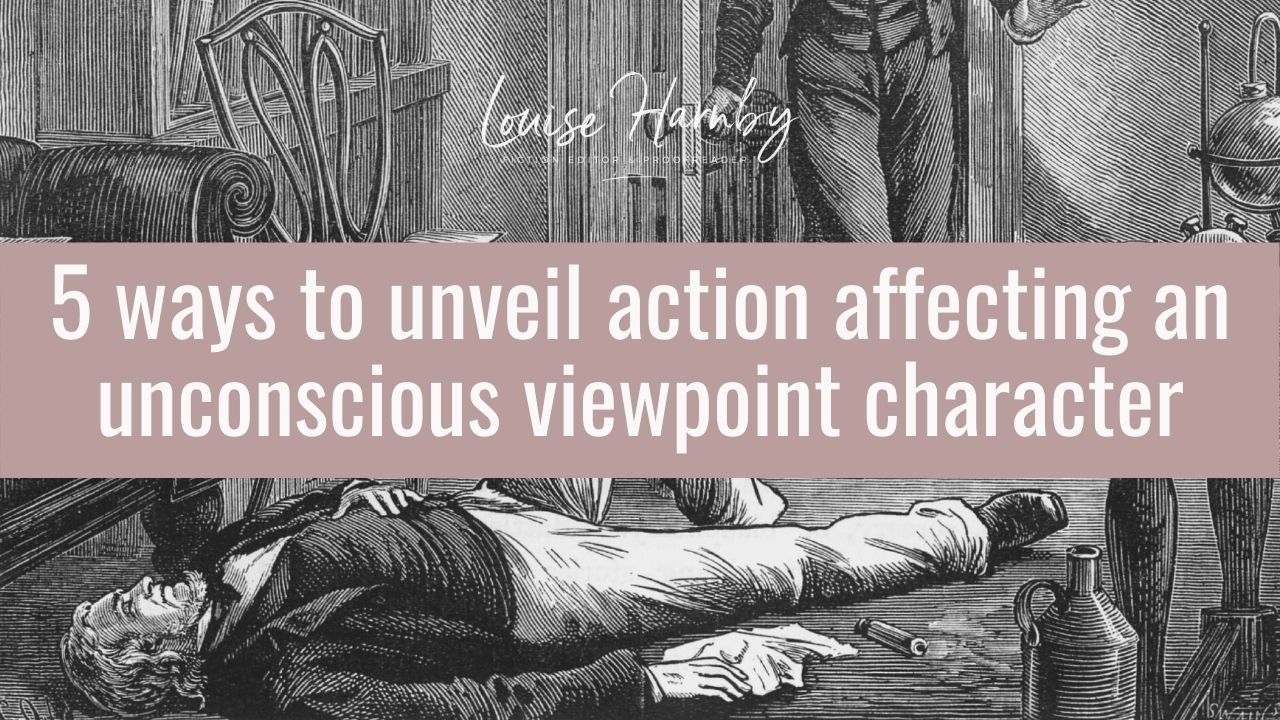
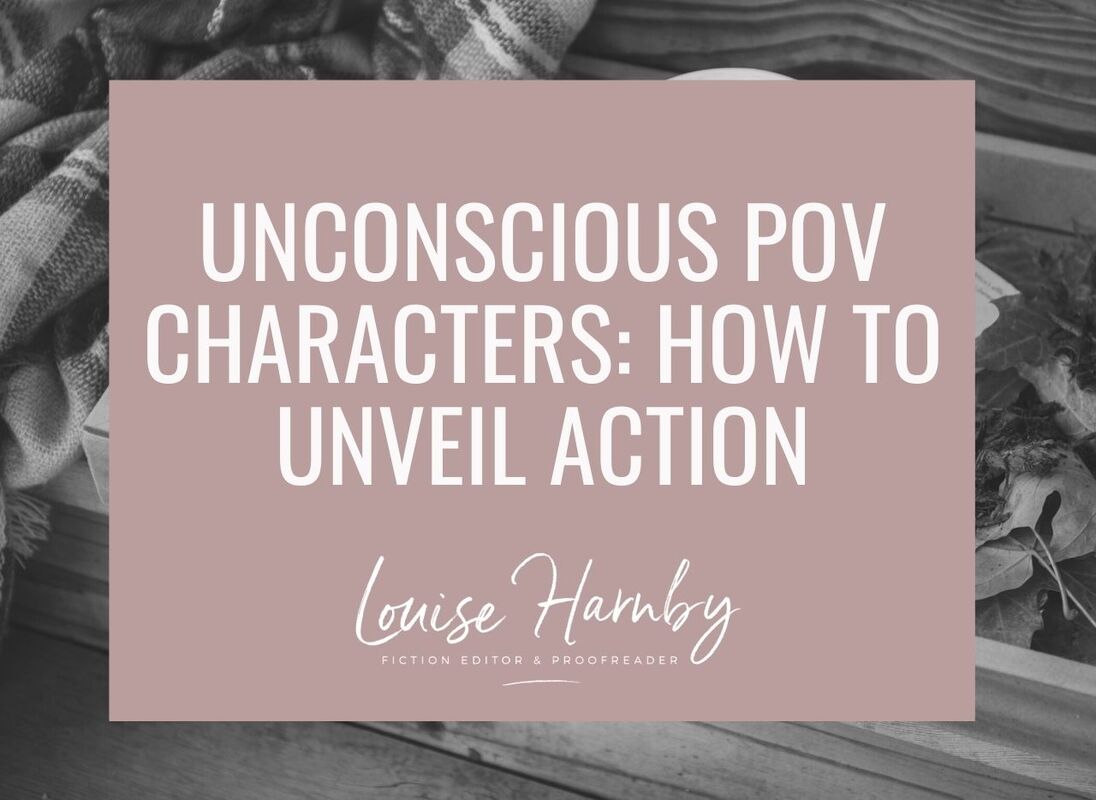

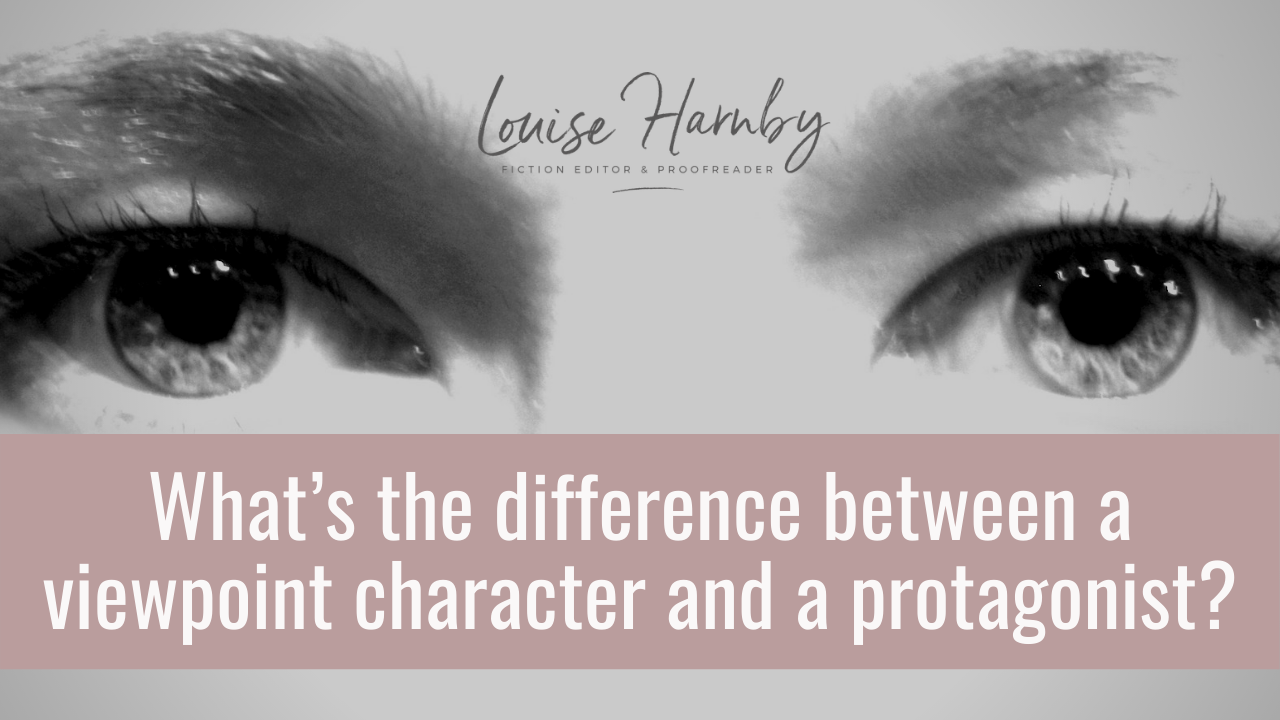
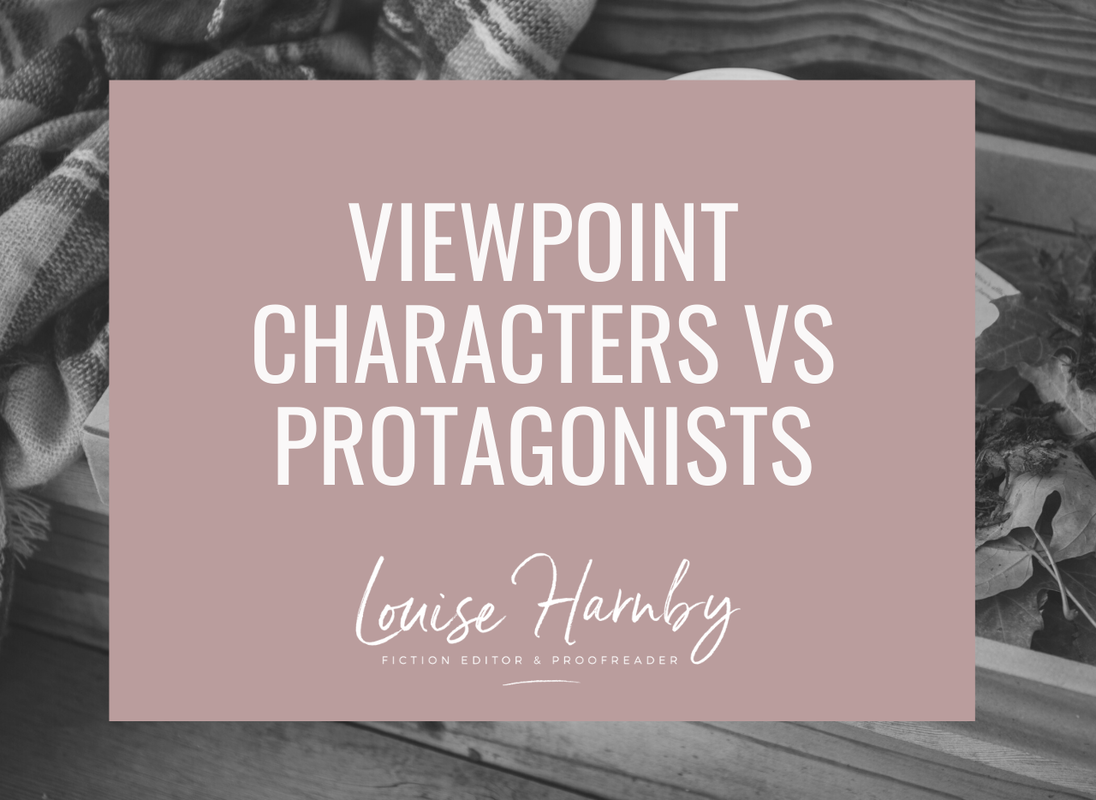
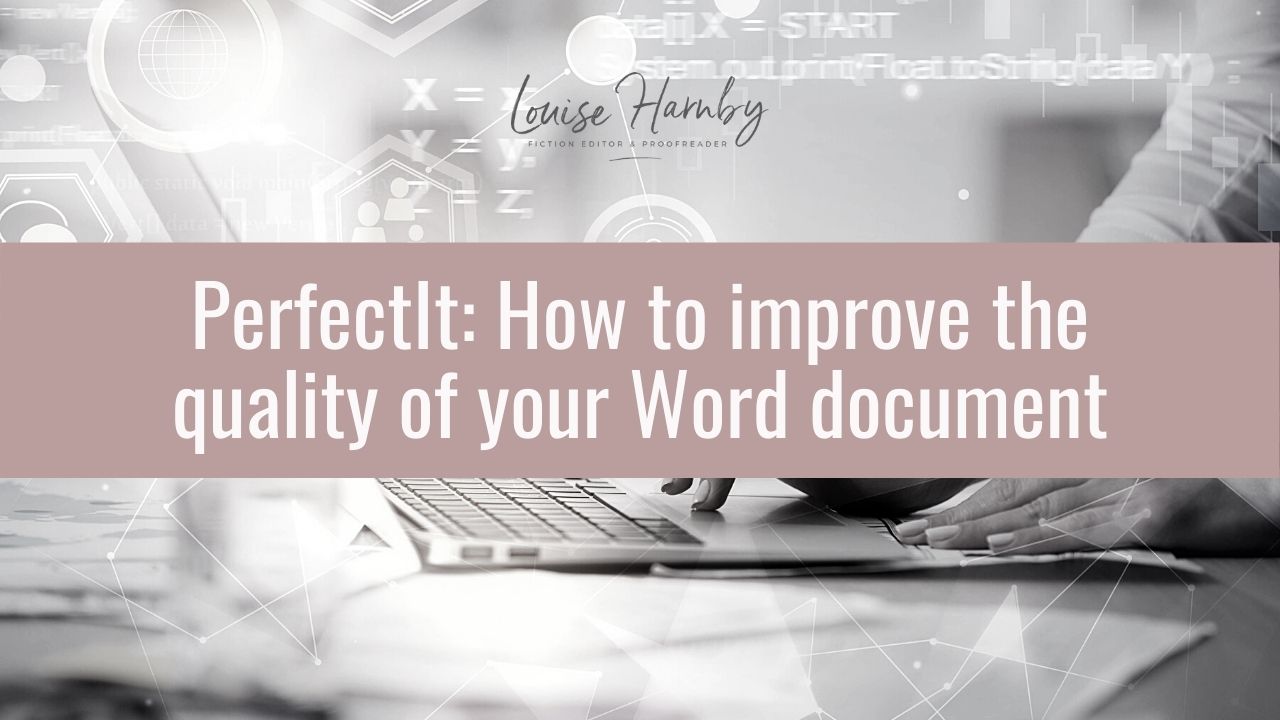
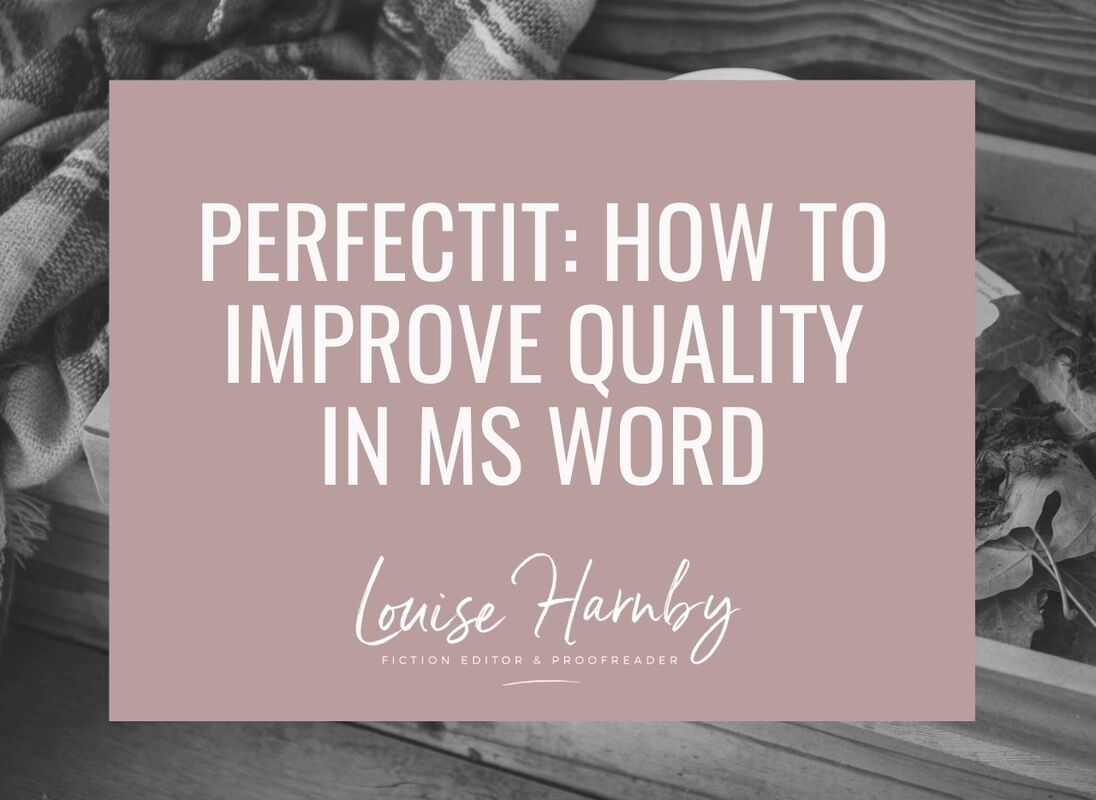


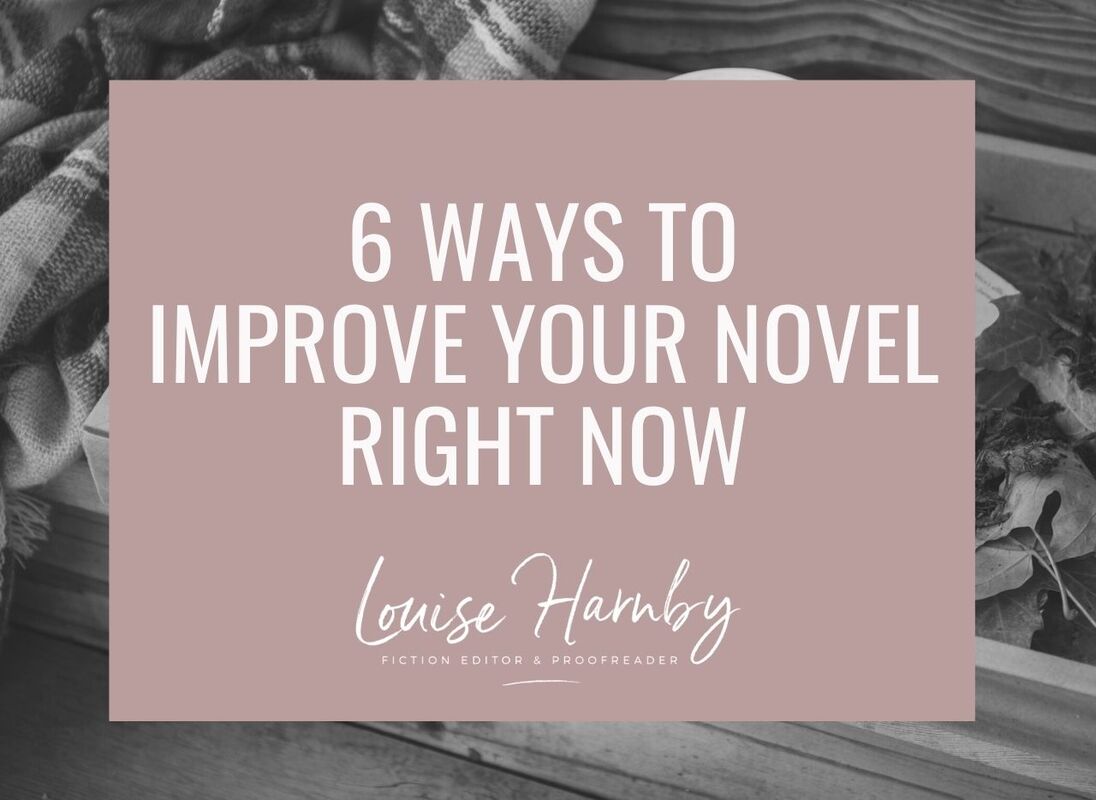
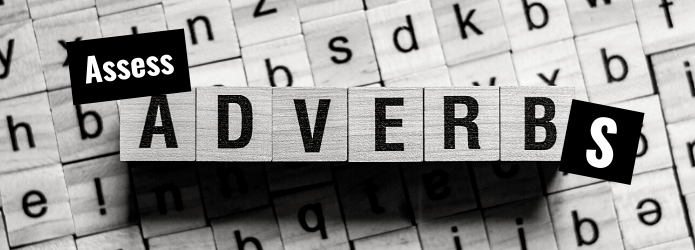


















 RSS Feed
RSS Feed





